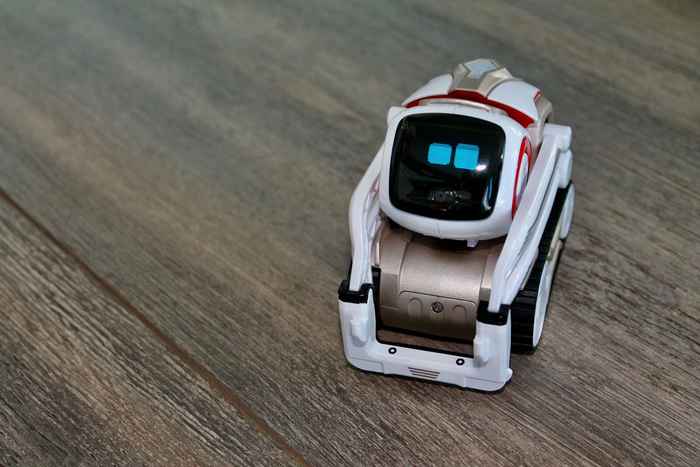Social robots do not maintain children's interest yet
8 July 2022

'Social robots are increasingly being used for various purposes, including entertainment', De Jong explains. 'However, we didn't know whether children would actually accept them. We analysed a wide range of literature on the subject, which generally showed children's initial enthusiastic reaction to social robots. When we started monitoring children longitudinally, we found that use changed strongly after only two to four weeks.’
Few children immediately reject a robot
De Jong started by developing a tool that could reliably measure acceptance. Next, she asked a group of 570 children aged eight and nine to try out a Cozmo robot at home. 'It's a commercial robot focused on games and entertainment and is available to consumers.’

82% of children indicated that they would be interested in using the robot at home. The rest wasn’t sure or immediately rejected the robot. 'Children's interest depended on whether they thought it would be fun to use this particular robot at home, how they thought their parents would react, and whether their friends would also use it. Their general enthusiasm towards robots was also important', De Jong explains. As it turned out, children's willingness to adopt the robot wasn't influenced by its ease of use or usefulness, or by their own level of self-efficacy.
Use declines rapidly over time
De Jong asked 321 children to take the social robot home for eight weeks. 'They were free to either use it or not. We collected usage data from the robot itself and questionnaires to determine whether they used the robot and what they thought of it.
As it turned out, the children were very enthusiastic at the start. 'Most of them used the robot for the first two weeks', De Jong explains. ‘But after just two weeks use started to decline rapidly.’ Nearly 30% of the children used the robot consistently during those eight weeks. The vast majority stopped using the robot after those two weeks, or only used it every few weeks. 'Children's acceptance of robots has a lot of parallels with their normal playing practices. They can be interested in something one minute and lose interest the next.'
Competition of other toys proved to be a major factor
This sharp decline after the initial enthusiasm surprised De Jong, 'because children do gravitate towards other kinds of technology, like games and tablets'. This decline didn't seem to be caused by the fact that the novelty had worn off or that the robot didn't live up to expectations. Especially the competition of other toys and devices and a lack of motivation to use the robot were relevant in explaining non-acceptance.
The future development of social robots
'Current social robots for domestic use seem to partly fail to maintain children’s interest, at least compared to what we expected', De Jong concludes. De Jong recommends future studies to especially focus on the use of social robots over an extended period of time. 'After all, we now know you can't expect that initial enthusiasm to last.'
Children's perspectives are also important. We need to find out what interests them and what they feel is still lacking in current robots. 'The social aspect of robots and the fun you can have interacting with them were important factors in terms of the kids' motivation to use them at home. After all, children expect a robot to be fun.' Finally, De Jong suggests also involving the child's environment more closely. 'Children also care about what their parents and friends think and do.'
Details of thesis
Chiara de Jong, 2022, ‘Children and Social Robots: Towards a Better Understanding of Their Acceptance of a New Technology’, supervisor: Prof. J. Peter, co-supervisor: Dr R.J. Kühne. Download the thesis from UvA Dare.
Financing: This research project was funded by the European Research Council through a grant awarded to Prof. J. Peter.
Time and location
Tuesday, 12 July, 12:00, Agnietenkapel in Amsterdam. The event will also be broadcast via livestream